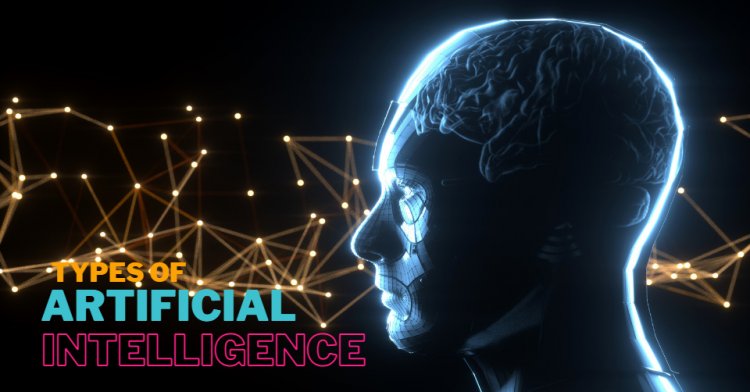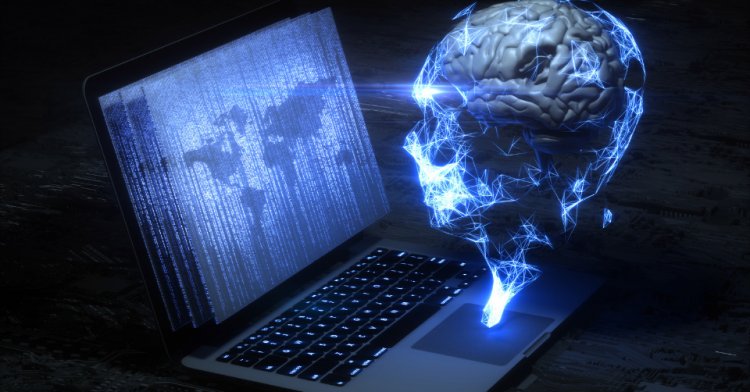Types Of Artificial Intelligence
Types of Artificial Intelligence with AI, Artificial Intelligence, Tutorial, Introduction, History of Artificial Intelligence, AI Overview, Application of AI, Types of AI, What is AI, etc.

Types of Artificial Intelligence
From Siri to Google Assistant, artificial intelligence is taking a big role in our lives every day. But what is artificial intelligence? The definition for artificial intelligence is the capability of robots or computer devices to perform tasks that would normally require human intelligence. As these machines become more intelligent and complex, so do their responsibilities and capabilities, like they can detect diseases, predict weather patterns, and more.
How many types of artificial intelligence are available today? All of them help robots and computers improve and function more effectively. This article will look at different types of artificial intelligence.
Narrow AI or Weak AI
It is the type of artificial intelligence where the machine is good at its own tasks but not as well as a human. For example, Siri can tell jokes, play games, and speak to you in another language. Most people use this type of artificial intelligence when it comes to using Google Assistant to search for information online or Apple’s HomePod which plays music and talks to you. This kind of artificial intelligence is typically used by companies and organizations across all industries and professions.
Weak artificial intelligence may be the most common of all in everyday life, whether on a personal level or on an organization’s level. You use your phone to access apps like Uber, Netflix, Amazon Prime, and others and Alexa, often through your voice or by simply saying “Alexa” to make an appointment. Another example is Siri & Google Assistant can call doctors and nurses, give directions, schedule appointments, and even have medical queries answered. These examples show the power of machines making routine simple decisions for humans and can make certain services more efficient and effective.
Weak artificial intelligence has led to the creation of robotic assistants such as IBM Watson & Microsoft Cortana, which can answer questions like “how old is my dog today?” And there are also programs that listen to your requests and respond to them. Examples include Amazon Echo and Alexa. They understand how to respond to commands, can remember to ask your name, know your preferences, and can learn to speak and understand the way you communicate.

Weak artificial intelligence can be helpful for communication and coordination with other household members and businesses. Whether it is your kids or you are working from home, both of you know that your favorite TV shows and movie series are still based on creating strong relationships with this technology. An example is Facebook Messenger, where your family and friends now can talk and find out each other’s activities and schedules. When it comes to health care, mobile applications like Fitbit & Garmin track your steps, heart rates and calories burned off, and other fitness data that help keep the body healthy and prevent illness.
The concept of weak artificial intelligence is important to healthcare because it helps detect disease early and manage patient treatment options. In the U.S., this concept has helped lower death rates in nursing homes, assisted living centers, and hospitals to reduce infection spread and mortality.

Artificial Intellect (AI)
Artificial intelligence isn’t new but it is being introduced into several fields including healthcare, education, security & defense, transportation, communication, manufacturing, energy, science & business. Many countries have implemented this technology to help increase productivity, save time, and avoid cost and waste. However, in recent years we have seen this approach evolve thanks to advances made by researchers and entrepreneurs in artificial intelligence. We are seeing more advancements being made every day thanks to research and development companies focused on building artificial intelligence to better understand natural systems, solve problems and make our world easier. One of the latest developments is the digital twin, meaning a simulation of reality created by simulating the physical environment by collecting and processing large amounts of data to gain insights into daily activities and processes. It is estimated that $7.3 trillion is expected to be spent on developing artificial intelligence in 2018[1]. It is also projected that by 2025 this technology will help achieve universal basic income[2], help cure cancer, reduce poverty, and improve quality of life across the globe.
Artificial Intelligent Devices
One of the best things about artificial intelligence is the ability to create devices that do just about anything a machine can do. Not only does it mean better user experiences, but these devices can also work faster than previously thought possible. Computers work much quicker in comparison to typical desktops, with some running up to 80 percent faster. So if someone were to travel on a plane, they would probably stay in-seat for at least four hours as opposed to a normal flight.
In addition, smartphones already act as virtual assistants, able to recognize and interpret the spoken words of a conversation. Some smartphones are able to connect to a device known as Wi-Fi and help users connect with nearby IoT devices, enabling them to share real-time information. With this technique of combining hardware and software, we could see improvements in a wide variety of areas like education, logistics, healthcare, automotive and more.
AI Hardware And Software
Artificial intelligence is made up of three key factors which are hardware, software & connectivity. Hardware involves components like the CPU, sensors, actuators, storage devices, and display technology, while the software is composed of operating systems and processors. Connectivity provides the ability to transfer energy, create data and send information to other devices. Although it is easy to think that artificial intelligence makes everything smarter by replacing human brains, most applications tend to be centered around the improvement of human cognitive abilities over those provided by artificial intelligence. Human intelligence is considered to have evolved only through learning to take control of their environments, whereas artificial intelligence was developed with the intention of mimicking the brain. Today, artificial intelligence doesn’t exist without artificial intelligence hardware, however, various devices of artificial learning that support it can be found in various industries worldwide. There is the potential to use these devices in multiple ways in the development of artificial intelligence in different applications. A growing number of companies are now adopting artificial intelligence software to help businesses analyze big datasets and identify patterns, trends, and anomalies that will help inform future predictions and aid decision making. Other examples include Salesforce, Zendesk, Workday, Accenture Technologies, Inc., I-Robot Corporation & Locus Robotics.
References
[1] International Research Council
[2] World Economic Forum
What's Your Reaction?




















